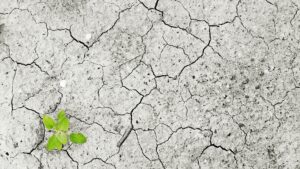University of Florida (UF) economists estimate that Hurricane Idalia caused between $78.8M and $370.9M in production losses in Florida’s Big Bend region, according to a UF release. Approximately three million agricultural acres including peanuts, cotton and other row crops; livestock operations including dairy and poultry; aquaculture operations and more were in the path of the storm, which made landfall in Florida Aug. 30, 2023.
According to the report, Hurricane Idalia’s force was concentrated in its center. The eye of the storm passed portions of Dixie, Hamilton, Lafayette, Madison, Suwannee and Taylor counties, causing Category 2- to 3-force winds. Areas outside of the path of the eye saw windspeeds of tropical storm or lower strength. Impacts to agricultural operations depended mostly on proximity to the eye, with damages ranging from nearly none to very significant.
Preliminary data shows the following commodity categories appear to have suffered the highest predicted losses due to Hurricane Idalia:
- Animals and animal products: losses of $30.1 million to $123.4 million. This includes beef and dairy cattle, poultry and shellfish aquaculture, as well as products like milk, eggs and honey.
- Field and row crops: losses of $30.7 million to $93.6 million.
- Greenhouse and nursery products: losses of $4.7 million to $68.8 million.
Assessment of the production damage by the UF/IFAS Impact Assessment Program is currently ongoing. Preliminary assessment of agricultural losses and damages is available in their report here. The report will serve as one of several key resources as federal and state agencies make decisions related to the disaster’s response and recovery. The loss ranges will be narrowed in a final report as more data is collected over the coming months.
Key pieces of agricultural infrastructure, including overturned center pivot irrigation systems, blown-off roofs and damaged fence lines, were among those hardest-hit by the storm. The assessed losses are production losses only and do not damage to infrastructure, though infrastructure makes up a significant portion of total losses.
Assessing the total cost of the infrastructure damage is extremely difficult, said Christa Court, assistant professor in the UF’s Food and Resource Economics Department and the director of the UF/IFAS Economic Impact Analysis Program, in the release.
“Although infrastructure damage certainly affects farmers’ bottom lines and occasionally production more directly – as is the case with livestock contained in fencing or buildings, or equipment that irrigates a crop — we are not currently able to adequately quantify these infrastructure damages due to a lack of baseline data. However, we do believe that Idalia will help us gather critical information to build this baseline data for future assessments.”
To produce estimates of agricultural losses, the EIAP layers data from multiple sources, including the storm’s path, windspeeds, rainfall and flooding, value of the agricultural commodities in the specific county, and season. This data is combined with information about how specific commodities might be impacted by specific storm conditions: a crop in mid-season may have different ability to withstand and rebound from storm pressures than a crop ready to harvest, for example. As a final level of accuracy, the economists add data from survey responses submitted by affected agricultural producers and Florida Cooperative Extension faculty.
“Each storm brings different windspeeds and rainfall, and even though our methods allow us to estimate a credible range of losses given certain characteristics of a storm, we still rely on first-hand reports to fully understand the losses and damages caused by a particular storm,” said Xiaohui Qiao, research assistant professor in the UF/IFAS food and resource economics department and data analyst for EIAP, in the release.
Agricultural producers impacted by Hurricane Idalia may still contribute to the data collection. The survey to report losses remains open in both English and Spanish. The EIAP plans to release a final report about production losses later in the season.












